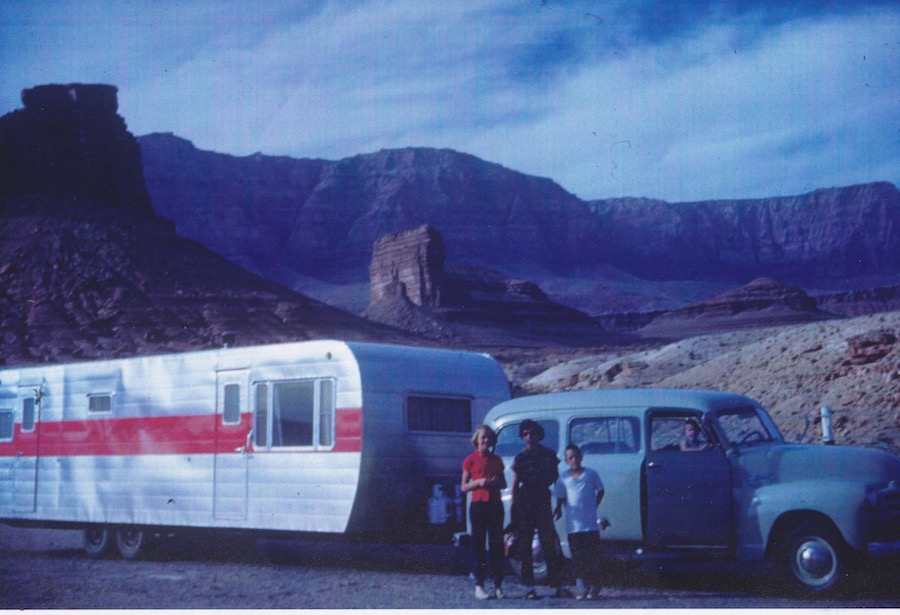When I was in the third grade, my sister and I and a couple neighborhood kids designed “go carts”. These were a platform one or two kids could sit on and coast down a really cool hill near the trailer park where we lived. At first we used old lawnmower wheels, bolts for axles, and attached the bolts to the bottom of the platform (which we found) with u-nails. This did not work well and the wheels kept coming off. Not only that, the wheels didn’t all point in the same direction so steering was a problem.
Someone, perhaps a mom or dad, suggested using rods as an axles running from one side of the go cart to the other. This entailed a trip downtown to the hardware store (on our own) but worked much better and we were able to speed down the hill with abandon……except the wheels were still not aligned and there was a tendency to veer off to one side or the other. Leaning helped compensate, but…. someway to steer would be better.
The first design we came up with was to mount the front wheels on an axle and mount the axle on a 2 X 4. Then we drilled (hand drill, not electric) through the center of the board and through the platform and mounted the 2 X 4 with the axle on a bolt so it would pivot from the center. Because we tightened the bolt too much, the axle couldn’t pivot so it didn’t work. Then we discovered washers, and placed them between the steering board and the platform and it worked! We tied a rope to each end of the axle board and …voila ….steering. It actually worked and we spent hours coasting down the hill, running off the track and repairing the inevitable breakdowns. Steering with a steering wheel became the holy grail and we tried a lot of ideas, but failed. This was an early lesson about the beauty of a simple and reliable design.This was third grade engineering. We were motivated. The hill was there. We had free run of the trailer park for materials and we had occasional, but not too much, adult input. And no TV, videos or video games to distract us. Our parents figured as long as we were running around the trailer park with other kids someone’s parents were fairly close by to keep us from real trouble.
I compare this with a mousetrap car project that my son did when he was in the 4th grade as part of the competitive science Olympiad. A letter came from school inviting kids, with parent help, to make mousetrap cars and then enter them in a race. Ben wanted to enter. The letter was pretty clear parents were to “help”, not build, the car. He worked hard, with not much help and came up with a workable design. Time for the race came and we went over to line up for the competition. The rest of the cars looked perfect so I could tell they had been built by adults. Ben’s car was not going to do well. Needless to say it didn’t. He was crushed, not because he didn’t win but because all the other cars looked and ran so much better than his. I tried to console him but didn’t help much. This event made Ben leary of school science forever. Luckily, real science, the Carl Sagen, Richard Feynman, Martin Gardner science was not affected and we continued to do experiments and make science projects at home.
••••

When I mentioned this story to a friend, he told me his sixth grade science fair was won by a kid who gave a tracheotomy to a rat. And it was no surprise his father was a surgeon.
Thanks for the comment. I believe it.